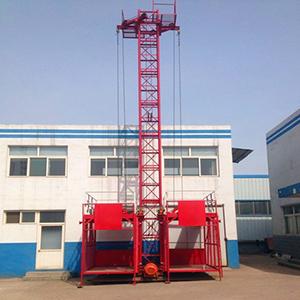In the construction industry, efficiency, safety, and productivity are paramount. One of the key factors that contribute to achieving these goals is the use of lifting equipment. From cranes and hoists to forklifts and scissor lifts, lifting equipment plays a crucial role in moving heavy materials and ensuring that projects run smoothly. However, simply having access to this equipment is not enough; regular maintenance and repair services are equally important to ensure that these machines operate safely and effectively. This article will explore the numerous benefits of utilizing construction lifting equipment and the essential role of maintenance services in enhancing safety, productivity, and overall project success.
1.Enhanced Safety on the Job Site
Safety is the top priority in any construction project, and lifting equipment significantly reduces the risks associated with manual handling. Lifting heavy materials manually can lead to serious injuries, including strains, sprains, and even more severe accidents. By using specialized lifting equipment, workers can avoid the physical strain of lifting and transporting heavy loads, thereby minimizing the risk of workplace injuries. Additionally, well-maintained lifting equipment is less likely to malfunction, further enhancing safety. Regular inspections and maintenance ensure that all safety features are functioning correctly, providing peace of mind for both workers and management.
2. Increased Efficiency and Productivity
A building construction lift allows for the quick and efficient movement of materials, which is essential for keeping projects on schedule. Instead of relying on manual labor to transport heavy items, which can be time-consuming and labor-intensive, lifting equipment can move materials quickly and with minimal effort. For example, cranes can lift and position heavy beams or equipment in a fraction of the time it would take workers to do so manually. This efficiency not only speeds up the construction process but also allows workers to focus on other value-added tasks, ultimately increasing overall productivity on the job site.
3. Cost Savings
While the initial investment in lifting equipment may seem significant, the long-term cost savings can be substantial. By reducing the need for manual labor, companies can lower labor costs and minimize the risk of injury-related expenses, such as workers’ compensation claims and medical costs. Furthermore, well-maintained lifting equipment operates more efficiently, consuming less fuel and requiring fewer repairs over time. Regular maintenance services can help identify potential issues before they escalate into costly repairs, ensuring that the equipment remains in optimal working condition and reducing downtime.
4. Versatility in Applications
Lifting equipment comes in various forms, each designed to handle specific tasks and materials. From forklifts and scissor lifts to hoists and cranes, the versatility of lifting equipment allows construction teams to tackle a wide range of projects. For instance, scissor lifts are ideal for reaching high areas, while forklifts are perfect for transporting heavy pallets. This adaptability makes it easier for construction companies to select the right equipment for their specific needs, enhancing overall project efficiency.
The benefits of utilizing construction lifting equipment and small house lifts in Mumbai are numerous and significant. By prioritizing the use of lifting equipment and maintenance, construction companies can elevate their projects, protect their workers, and maintain a competitive edge in the ever-evolving construction industry.

